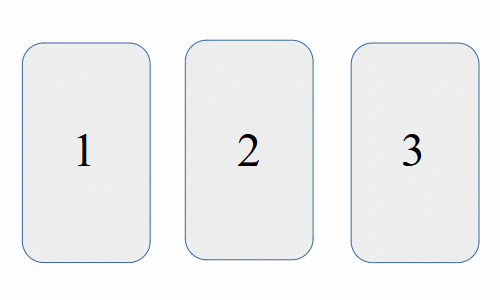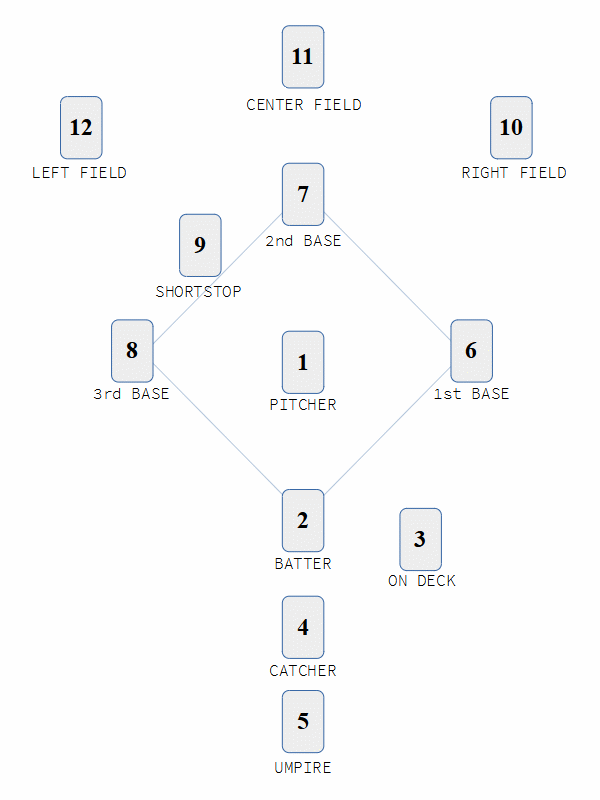Spreads for the Tarot Cards
- Jump to: 3-Card
- Jump to: The Diamond
There are dozens of Tarot Spread layouts, and the reader is best served by selecting one that best reflects the gist of the querents question. Never draw cards for a Tarot Spread if the client is holding information back or if the question is still unclear in your mind. Tarot Readers are Translators, and you can't translate correctly from a bad source. The clearly understood question should be pondered upon during the draw/shuffle process, and you should stay focused on answering just that question during the reading (it's ok to jot notes if that's helpful). The Tarot arouses emotions, and although a reader should be sensitive about this, they must never whitewash what they see.
It is claimed that anything touched by a person will absorb a little of that persons aura. If this is what you believe, then it is a good idea to "clear" newly acquired decks before their first use, and to cursorily clear the cards between readings. Whether or not you permit a querent to touch your cards is a personal choice (it opens the cards to the possibility of being damaged or soiled), but allowing physical contact, if even just for pointing or pile cutting, is encouraged for absorptive reasons (as well as to give the querent a more active role in the reading).
As with other predictive card systems, final shuffles should be blind overhand shuffles (blind-drawing from a fan is a highly encouraged alternative). When you read a Spread, it is the spot where a card is placed in the Spread that is of importance. Therefore, before you lay a Spread, you must be mindful about what each spot in the particular Spread is designated to be representing, so that the cards filling each spot can be subconsciously selected to reveal a valid answer. Most querents appreciate if you begin by first reading their Spread as a flowing overview paragraph, before explicating individual card details.
The determination of upright is normally in reference to the readers eyes. If optionally reading using "Reversals", maintain a consistent methodology for turning over shuffled cards (e.g., flipping cards sideways or head-over-heels), so that the cards can align themselves appropriately. A card may be spun, if a need is felt, while the card is still face down. A reversed Pip or Court card usually indicates the card is expressing the downside of its normal meaning, whereas a reversed Major card instead usually indicates that a secondary aspect of the card is being expressed. Regardless of your choice about using reversals, that choice (as well as what Spread will be used for the reading) must be made clear to all concerned before the cards are shuffled or selected (so that the subconscious can know how to formulate its message).
The 3-Card linear Spread is the generic workhorse Spread used by the majority of Tarot readers (the corresponding slightly enlarged 5-Card linear Spread being almost as popular). This query answering Spread is chosen when desiring to succinctly glean emotional insight into a situation currently occurring.
Begin by shuffling the deck face down using an overhand shuffle. Next consecutively draw the first three cards from the top of the deck, laying them face up in a row from left to right.

All three cards are examined as an integrated whole. In a Spread this small all cards are weighted as equal mightiness, regardless of whether they are Major, Court, or Pip cards.
Reading flows from left to right, reflecting a path from near-Past, to Present, to near-Future. The separations are not identically proportional, and so it will often be the case where cards 1 and 2 are basically both just confirming the players creating the present situation. On the other hand the rightmost card (in both this 3-Card and the 5-Card linear Spreads) will always indicate where the path is leading, should no changes be implemented.
The most traditional of the Tarot Spreads is the ten card Celtic Cross, which is used primarily for an in-depth study of your current point in life. Although older Tarot books tended to include it (even though it is not recommended for beginners), many professional Tarot readers dislike it immensely. An outstanding alternative is this twelve card Spread called "The Diamond" (as in Baseball Diamond).
The Diamond Spread is conceptualized upon familiar baseball mythology. The Spread is shaped like a baseball playing field, while the cards are simulacrums of the players on the field. As with many of the larger Tarot Spreads, this Spread is not intended for answering queries, but rather will itself put forward the overall Theme that it has decided it wishes to discuss.
Begin by shuffling the deck face down using an overhand shuffle. Next consecutively draw the first twelve cards from the top of the deck, laying them face up in the baseball field pattern illustrated below.

The first five cards drawn (Home Plate) discuss the current situation in detail, and are the core message being imparted by this reading. The remaining cards (Field) illuminate the possible path ahead.
Home Plate ~
1 = PITCHER: The overall theme, situation, issue (Sun)
2 = BATTER: Who you are in this situation; traditionally, the Significator (Earth)
3 = ON DECK: Potential; who you are becoming, or could become
4 = CATCHER: "Getting it"; what you need to understand better (Moon)
5 = UMPIRE: Impartial judgment: underlying truth (Saturn)
Field ~
6 = 1st BASE: First step; the beginning; mental aspect (Mercury)
7 = 2nd BASE: Second step; choices; emotional aspect (Venus)
8 = 3rd BASE: Last step; power; action aspect (Mars)
9 = SHORTSTOP: "Keep in Mind"; practical advice (Jupiter)
10 = RIGHT FIELD: Morally right (Pluto)
11 = CENTER FIELD: Centering, grounding influence (Neptune)
12 = LEFT FIELD: "Out of left field"; surprise element (Uranus)
#
A resource with more Spreads can be found here.
Note: Forecasters often offer their services to the general public, and should bear in mind that clients often are not just looking for answers, they quite probably chose to have the cards read to them (as opposed to reading the cards for themselves) because they are also seeking entertainment. Add flair to the performance of choosing the cards, and surround yourself with appropriate exotic or comfy stage trappings. Clearing the deck between readings presents an opportunity to ring a bell, wave a feather, or employ some other attention grabbing flourish. During the actual reading though, honestly translate exactly what you see (never force a meaning onto a vague card reading in order to obtain a preferred answer), explain why you see it (telling the story by beginning with a broad overview, then moving to specifics, usually works best), and never try to overstate/understate what the cards are saying in order to steer a client onto a path or make them feel better (truth sometimes hurts).
This video gives an overview of how a Forecaster might perform a public reading: Lesson 5 - Tarot Reading.
All content appearing on this webpage is FREE for personal use,
being either expressly created or previously posted as anonymously accessible public on the Internet.
No - Signup chicanery, Tracking, Cookies, JavaScript, Merchandising, or Donation solicitations.